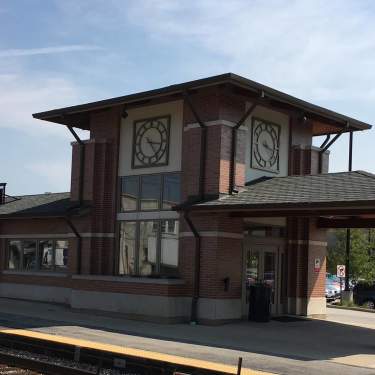Wood Dale
The area now known as Wood Dale was first inhabited by the Winnebago tribe, part of the Sioux nation, and used as hunting grounds. The Winnebago gave up the grounds in a treaty after Illinois became a state in 1818. In 1833, Hezekiah Dunklee of New Hampshire, made a claim (along with fellow traveler Mason Smith) on land near a large stand of trees by the Salt Creek, which became known as Dunklee's Grove. Edward Lester and family arrived in November 1835 and made their claim on Irving Park Road at the Salt Creek. A daughter in the family, Julia, requested a building to teach school the following summer located near the present site of the water treatment plant; the first such building in the area.
Prior to the Civil War, the area surrounding Dunklee's Grove saw a large influx of German immigrants. This group produced merchants, doctors, lawyers and teachers and built churches, schools, hospitals, stores and banks. Culture and prosperity flowed, Germans claimed much of the remaining area, and a bilingual community was created. Following the Civil War, transportation in the area was less than ideal. Frederick Lester, the youngest of Edward's sons, led a group that persuaded the Chicago and Pacific Railroad to build a track through some of the properties. He donated the depot site next to his home on Salt Creek and contributed toward its construction. By 1873, the line stretched through the area from Chicago to Elgin. Lester and Frederick Heuer constructed the first industry in the area, a cheese factory, next to the depot. By 1874, the area at the north end of Dunklee's Grove was known as Lester.
In 1890, the train station was moved to its present location near Wood Dale Road and Irving Park Road in order to build an inn. Prior to the turn of the century, there was a proposed subdivision south of the tracks and east of Wood Dale Road to be called Wooddale. The residents liked it enough to change the name of the station to Wooddale in 1899. By 1928, there was sufficient support for incorporation. Thus, the Village of Wood Dale was created. Wood Dale grew slowly through World War II. Beginning in the 1960s, however, the population grew immensely - from 3,071 in 1960 to over 11,000 by 1980.
Source: Village of Wood Dale
Easy access to I-390 makes it easy to stay in Wood Dale. Both hotels offer different amenities suited for the entire family. Fitness centers, pet-friendly rooms, hot tubs…
Take a bite into pancakes at a long standing diner or some pierogies at a Polish eatery. Dining like the locals is the perfect way to satisfy your hunger in Wood Dale.
Things to do while visiting Wood Dale, IL.



